
A Guide To Buying & Using Spray Adhesive Glue
Summary:
- What do I need to consider when choosing containers for hand-poured candle making?
- Material: Select a container made of heat-resistant materials such as glass or coated ceramic.
- Size: Choose a container that is wide enough to accommodate a safe perimeter of wax around your wick.
- Shape: Containers with a uniform diameter or width are ideal, as this facilitates an even burn. An even burn maximises your candle’s lifespan and helps to prevent smoky burning.
- Aesthetic: Match the container style with your candle’s intended purpose and/or branding.
Choosing containers for hand-poured candle making offers a multitude of options. With a range of materials, sizes, and shapes to choose from, read on for a 101 breakdown that can help you make the right selection for your candle making.
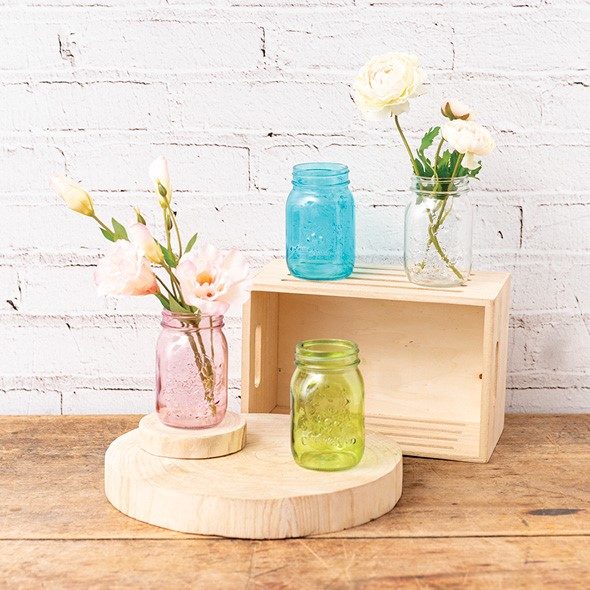
1. What kinds of materials are suitable for candle making containers?
Glass
Due to its transparent or semi-transparent nature, glass is one of the most popular materials when choosing containers for hand-poured candle making.
When selecting a glass container that is safe for hand-poured candle making, look for these qualities:
- A thick, smooth base.
- A lack of cracks, chips, or imperfections.
- Heat-resistance: heat-resistant glass containers will often be made of tempered or borosilicate glass. Some heat-resistant jars have a symbol on the base denoting them as such.
- Mason and jam jars designed for canning are a safe option, as they are designed to be exposed to high temperatures.
Ceramic & Concrete
Due to their decorative and heat-resistant nature, ceramic and concrete containers are popular for candle making. Their opaque appearance has the additional benefit of helping to conceal any imperfections on the sides of candles, which may ‘frost’ when setting.
When selecting a ceramic or concrete container that is safe for hand-poured candle making, the following can help assess whether your container is suitable:
- Microwave and dishwasher-safe icons are helpful indicators of the suitability of a vessel as a candle container.
- A lack of cracks, chips, or imperfections.
- A sealed internal surface. Ceramic and concrete are porous materials, so a sealed internal surface is important. Sealing the container from the inside will help to prevent the weeping of wax and fragrance into the ceramic or concrete. Wax and fragrance weeping can lead to loss of scent yield while burning and increased risk of fire hazard. For unsealed containers, two heavy coats of decoupage medium/glue should be applied prior to pouring in any wax. Decoupage glue is an all-in-one adhesive, sealant, and protective coat commonly used in crafting.
2. What size of container should I choose for candle making?
Small containers
Small containers can be economical and easy to use, especially for a beginner candle maker.
- Profitability: The cost of wax and fragrances can be high, especially if working with alternative waxes or essential oils. Using a smaller container for poured candles means that each unit can be cheaper to produce and thus cheaper for the customer to purchase.
- Smaller candle containers allow for an increased number of opportunities to experiment with scents and techniques.
- Smaller containers allow for more trial and error without significant investment.
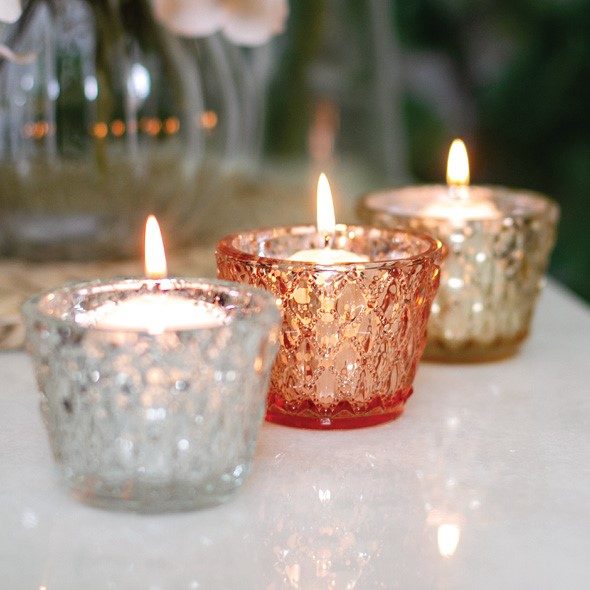
Medium containers
- The most popular size of container for candle making is typically in the range of 225 to 350ml.
- These medium-sized candles offer a good balance between burn time and cost-effectiveness for customers.
Large containers
For large candles, more technical factors start to come into play, so it’s necessary to evaluate the following when selecting your container:
- Stability: Ensure the container has a wide and stable base to support the weight of a larger candle.
- Wicks: Calculate the correct number and placement of wicks necessary to prevent uneven candle burning. If the wick is too close to the edge of the container, it can result in the container growing too hot (and possibly cracking or breaking). Conversely, a large candle without enough wicks means that the flame of the wick could never melt enough wax to create an even burn. This uneven burn will lead the wick to become flooded by wax, which renders the candle unable to continue to burn.
Safety Guidelines for Wick Placement
In any given candle, the distance of the wick from the edge of the container plays a key factor in determining the safety of the candle for use. Though this varies depending on the size of the wick, the type of wax, and the type of container used, 3cm is the minimum distance a wick should sit from a container’s edge.
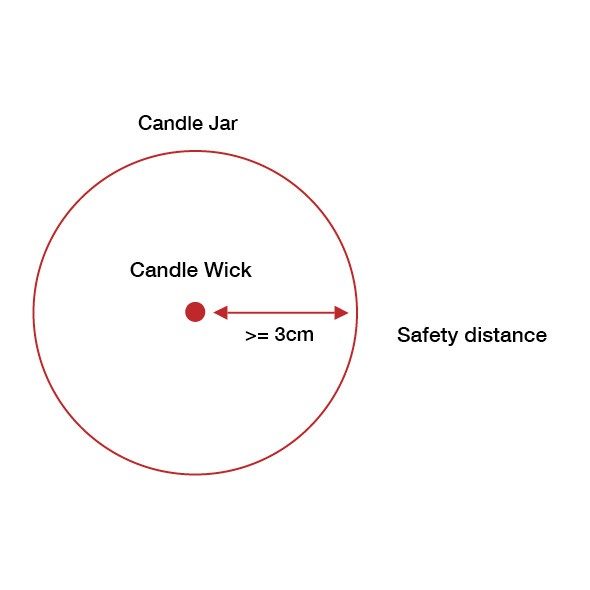
Most wicks generate enough heat to melt a well of approximately 6-7cm in diameter. In cases where a larger container is being used, for even burning, the use of multiple wicks should be considered.
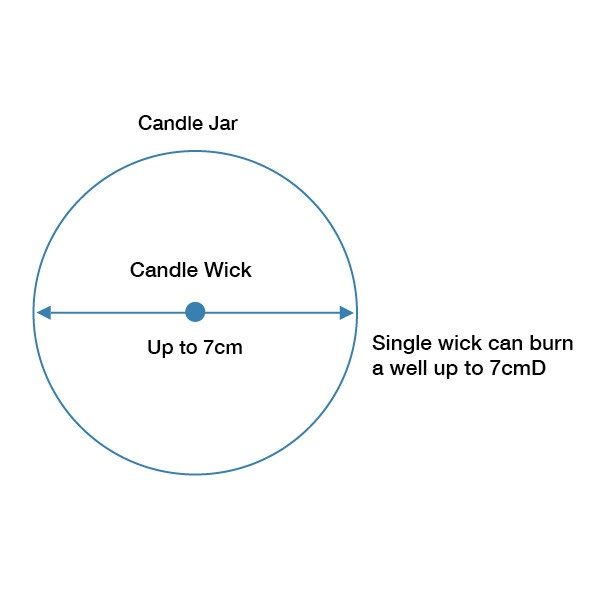
3. What shape of container is suitable for poured candles?
Be sure to take into account the shape of the container. If it has a wide mouth and is narrow at the bottom, it’s going to get hotter and hotter as it burns. This can result in cracking and breaking of the container.
Likewise, if your container has a narrow mouth and wide bottom, the ratio of wick to wax will become imbalanced as the wick burns down to the wider part of your container. It follows that your flame will be drowned by a greater amount of wax than the wick is capable of melting.
Ideally, your candle container will be uniform in width the whole way up and down. This optimises the evenness of your burn and the longevity of your candle.
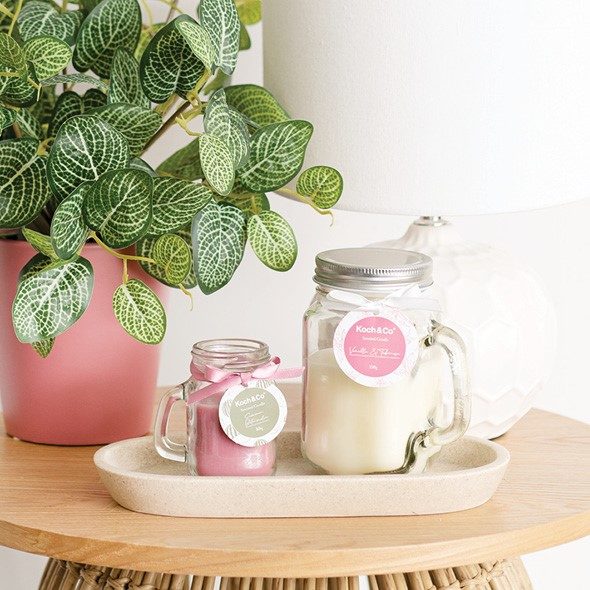
4. Is it possible to reuse my candle container after my candle has burned down?
Making more candles
Once the original candle has burned down, clean the container thoroughly, remove any remaining wax, and prepare it for a new batch. Reusing candle containers can be a sustainable and cost-effective way to continue making candles.
Safety tip: Always check your candle container for any signs of deterioration. Any points of weakness e.g. cracks, can lead to leaking of melted wax, container breakages, and fire hazards.
Vases & Storage Applications
Used candle containers can often be upcycled and repurposed as flower vases or containers for organisation within the home. With their attractive designs and sturdy construction, empty candle jars can make unique vessels for displaying floral arrangements, trinkets, or home essentials.
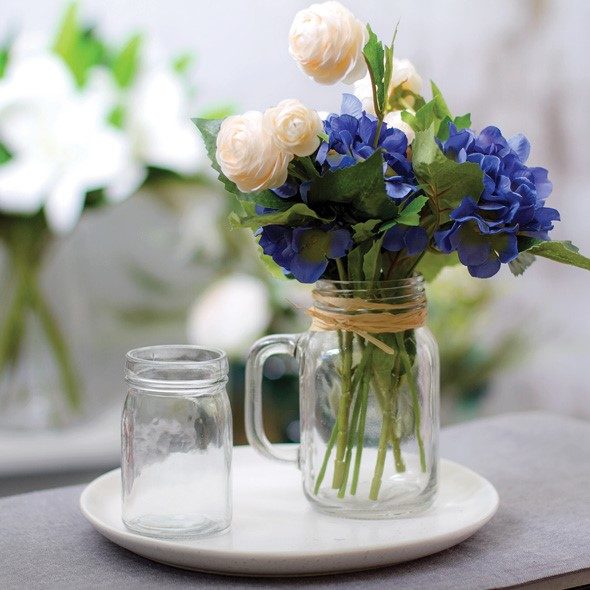
5. How to clean a used candle container?
To clean a used candle container, follow these steps:
- Allow the remaining wax to cool and solidify. For best results, freeze overnight.
- Turn container upside-down and slap base with an open palm. Wax remnants should fall out.
- If wax remains stuck in the container, proceed to use a spoon or butter knife to gently remove the hardened wax.
- Fill the container with hot water and allow to sit for a few minutes.
- Scrape off any residual wax using a non-abrasive tool.
- Wash the container with warm soapy water and rinse thoroughly.
For more information on our range of jars, vases, and candleholders, read our blogs How To Decorate Mason Jars and Candle Holders & Decoration Buying Guide. Please note, candle making techniques vary and the information provided above is intended as a guide. The user should assess their needs on a case-by-case basis for safe and successful candle making.
The post Container Buying Guide For Hand-Poured Candle Making appeared first on Koch & Co Blog.